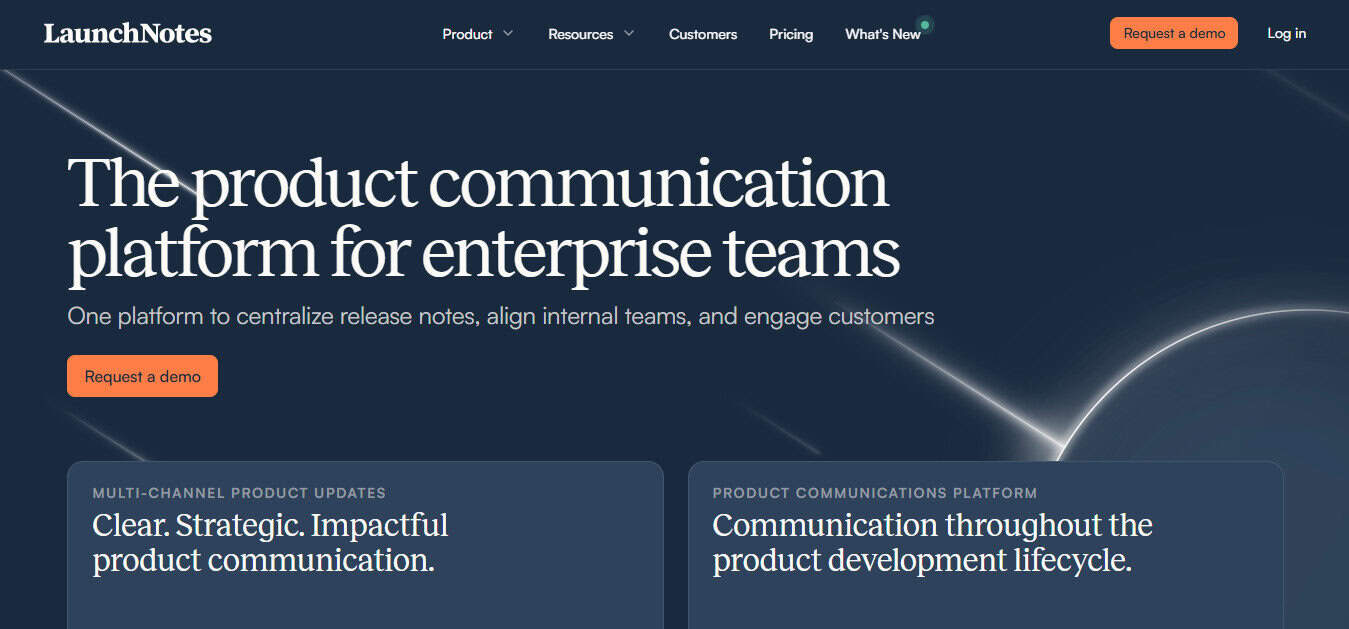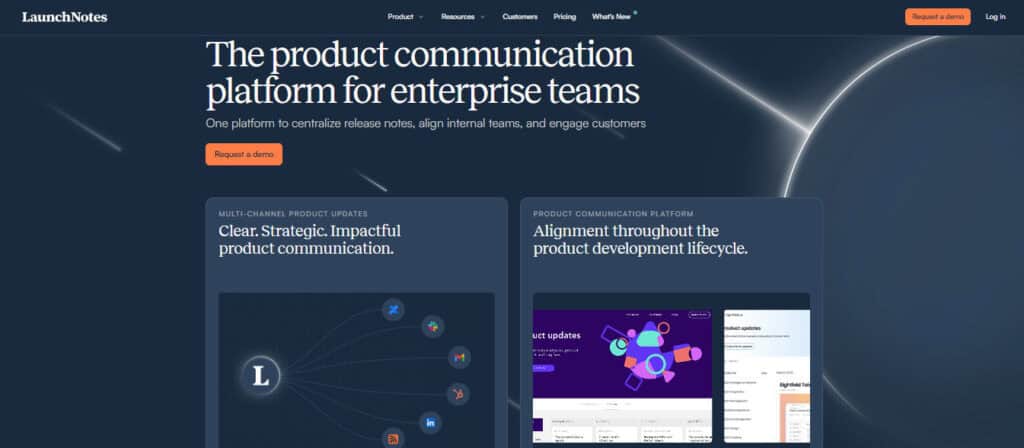- When to Choose GetBeamer for Clear and Concise Customer Communications
- Top GetBeamer Alternatives at a Glance
- My Picks for the Top GetBeamer Alternatives
- 1. LaunchNotes - Keep Everyone in the Loop During Product Releases
- 2. Supahub - A Cost-effective Option with a Clean Interface
- 3. Frill - An Efficient Platform to Capture, Organize, and Announce Product Feedback
- 4. Canny - A Single Robust Hub for all Customer Feedback
- 5. Featurebase - An Affordable and Simple Product Release Platform
- My thoughts on GetBeamer alternatives
Last Updated on October 3, 2025 by Ewen Finser
Your team has spent months perfecting a new product or upgrade. The day of go-live arrives and everyone’s ready. You craft clear communications to inform customers about the product, share updates, announce upcoming features, and provide marketing news.
Everything’s set. You press go, and then… silence.
No feedback. No responses. You’re left wondering: Is something broken? Did no one like the update? You have no idea what went wrong.
So, what happened?
You need a customer change communication and product release platform! This is software that tracks change management, product updates, and communicates new features to your customers. It needs to be communicated through a tool that makes it easy for customers to know about all your hard work. The challenge is that communicating these updates to users isn’t always easy, and a lot of teams struggle to get it right. GetBeamer is a popular and effective tool, but it’s not the only option available.
When to Choose GetBeamer for Clear and Concise Customer Communications
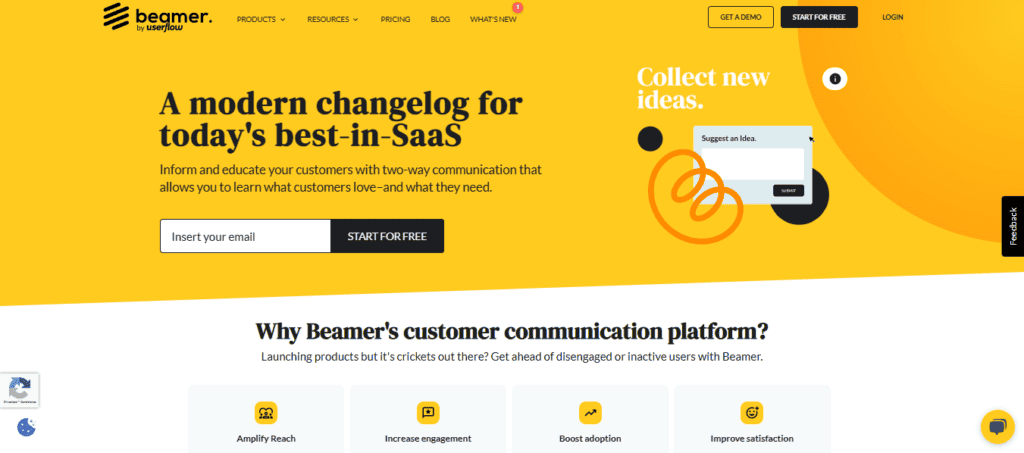
GetBeamer is a customer communication platform that does a great job keeping customers engaged. Installation is quick and easy, without any need for code. They have built-in analytics to help measure engagement, such as user clicks, views and location.
This tool has helped us stay on top of user engagement by making it easy to reach out to specific groups with personalized messages, especially if we notice users becoming inactive over time or not responding to new features. This proactive approach lets us quickly identify and address any issues, so we can better meet our users’ needs and increase adoption.
On the downside, their segmentation could be more advanced, and additional integrations would be helpful.
So what other options are out there besides GetBeamer for change communication platforms? Let’s take a look together.
Top GetBeamer Alternatives at a Glance
- Best Overall for Software Teams: LaunchNotes
- Best Overall for Companies on a Budget: Supahub
- Best Overall for Visual Product Roadmap: Frill
- Best Overall for Thorough Analytics: Canny
- Best Overall for Simplicity: Featurebase
LaunchNotes takes the busywork out of product updates. Paste in your notes or tickets and get a structured announcement draft instantly. It’s designed for teams that want to save time, segment updates, and keep communication consistent across every channel.
My Picks for the Top GetBeamer Alternatives
1. LaunchNotes – Keep Everyone in the Loop During Product Releases
LaunchNotes is perfect for keeping the product team or users in the loop by making updates clear and easy to follow. That’s why this platform is one of my favorites; it takes the guesswork out of communication and makes things run smoothly. It’s a great tool for helping teams roll out new features faster, keep everyone on the same page, and quickly get important updates from development into the hands of customers.
What I Like
I appreciate the ability to target updates to specific groups and get direct feedback from users, so our product updates don’t get ignored. This targeted communication is incredibly useful for understanding which features are resonating with our users, which ones need attention, and what customers want next. Having this real-time feedback loop really helps us prioritize improvements and shape our product roadmap.
LaunchNotes seamlessly integrates with Jira, which is a huge plus, so updates from our development team automatically appear on our roadmap. All our work is organized and easy to track in one place. This makes it effortless for leaders and stakeholders to check progress and see the status of each release. And best of all, the platform is set up intuitively and is easy to use.
Read our LaunchNotes Full Review here!
What I Don’t Like
LaunchNotes currently doesn’t have all the bells and whistles of other platforms, but what it has works well. For example, even though the integration with Jia is solid, other integrations may not work as well yet. And they currently do not offer email customization.
The Price
When it comes to pricing, LaunchNotes is designed for growing companies. They offer a single main plan and an enterprise option—so choices are a bit limited. There’s a free trial if you want to test it out, and they do have a basic starter version, although it comes with fewer features.
2. Supahub – A Cost-effective Option with a Clean Interface
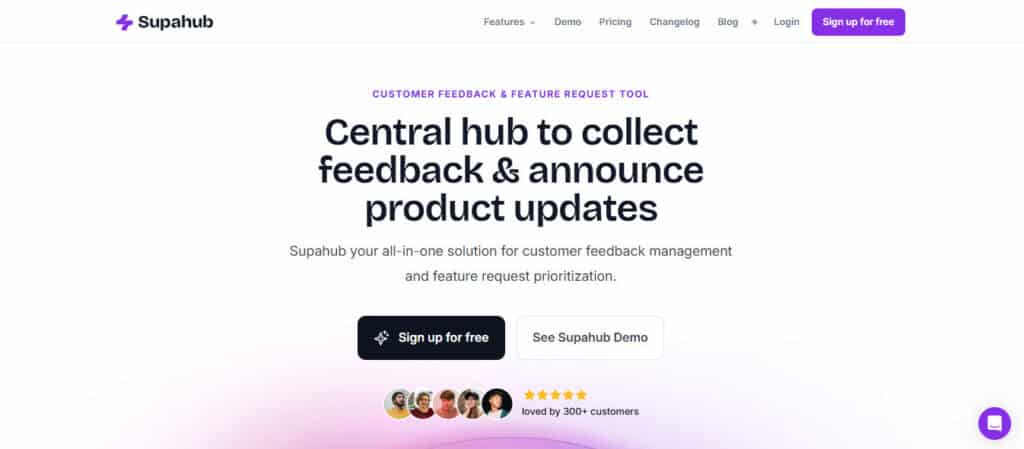
Supahub is a tool that lets you easily share product updates, new features, and bug fixes with your users. It has a simple, user-friendly interface that makes it easy to navigate and collect feedback, helping everything run more smoothly and efficiently.
What I Like
One of Supahub’s functionality we like best is the ability to easily white label and customize the feedback portal to our company’s needs. Their public feedback portal lets our users share ideas and suggestions for new features, as well as leave comments about what our users would like to see in the product. It also collects feedback from various different platforms, so we can see exactly what customers are saying about our product on various channels. They also have a way of prioritizing features to engage users more and get them excited about what is coming up next.
What I Don’t Like
Their UI is super basic, and although powerful, it is sometimes too basic for our needs. And for companies with a super small customer base, this may not be the tool for them. It’s also not a great fit for teams that prefer managing customer feature requests in spreadsheets.
The Price
Supahub’s pricing starts at $15 per month with many more features and customizations than GetBeamer. For companies with small products, this is an affordable plan and this platform will support them as they grow in their initial stages.
3. Frill – An Efficient Platform to Capture, Organize, and Announce Product Feedback
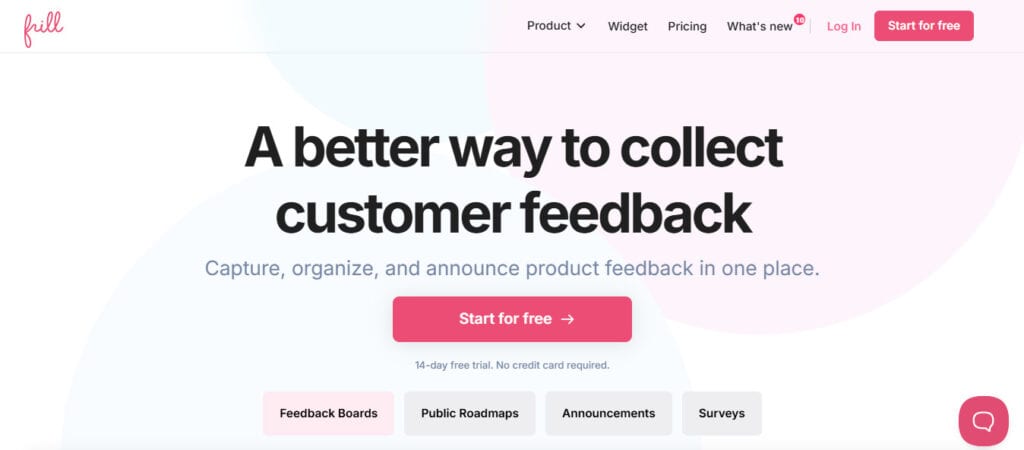
Frill has made it super simple for us to collect helpful feedback from customers. On Frill’s website, they say “Beamer is all about announcements. Product teams that want to know what customers think choose Frill”.
Setup was fast and the interface is really straightforward. Not only can we gather suggestions and ideas easily, but we can also share our product roadmap to keep users in the loop about upcoming features. Plus, it’s easy to embed into our website and app, switch up the language for different audiences, and tweak the colors to match our company brand.
What I Like
Frill makes it easy for us to gather feedback with their simple widgets, and we don’t have to worry about limits on users or team members. Our users can upvote their favorite ideas, which gives us a clear picture of what’s most important to them. We can also post updates in an announcements portal and share a public roadmap so everyone knows what new features are on the horizon.
What I Don’t Like
Frill is still a newer platform, and a few popular features and integrations are still in the works and haven’t been released yet. One area that can be a bit inconvenient is that users need to create an account to vote on ideas. This extra step might turn off people who aren’t already registered, which could mean you get less feedback.
The Price
Frill offers affordable plans that start at $25 per month which works well for small businesses. The Startup plan gives you access to most features and lets you track up to 50 ideas at a low cost. If you need to track more, you can upgrade to the Business plan for unlimited ideas without spending a ton more.
4. Canny – A Single Robust Hub for all Customer Feedback
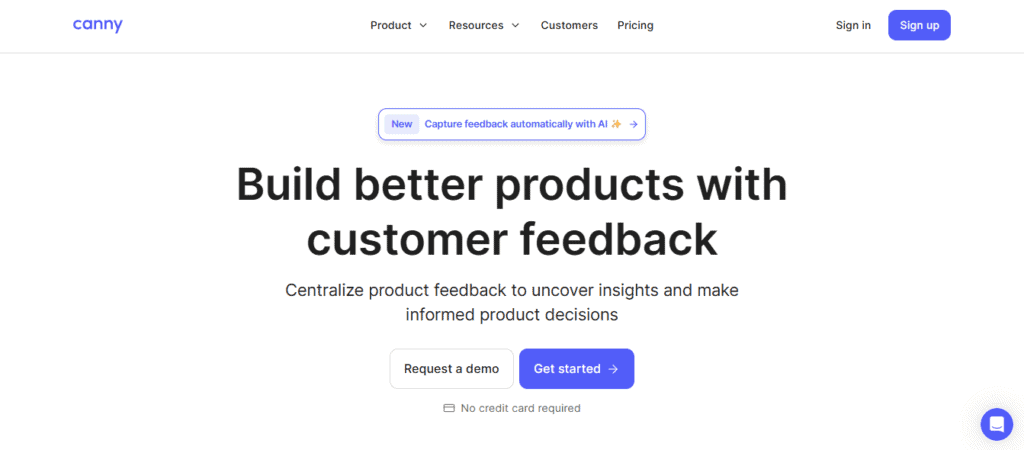
Canny is an all-in-one product management tool that lets you gather and review user feedback, create product roadmaps, and connect customer insights directly to what your development team is working on. In using this tool, we have found that analyzing, acting on, and gathering our feedback from our customers is easy.
What I Like
Interactive feedback boards let users vote on the ideas they care about most, while seamless integrations mean customers can share feedback without extra logins. Canny also pulls in company and user data, like job roles or team size, so we can prioritize requests more effectively. It uses visual roadmaps to keep everyone aligned, and automatically update users as progress is made, ensuring our feedback loop stays closed and engagement stays high.
What I Don’t Like
It is required to specifically enter a feature category first, which can make it hard to search for issues quickly, and we find we waste time going through categories. Additionally, we have been unable to find a way to remove the Canny branding in lieu of our own company brand.
The Price
Canny’s pricing is straightforward, but more pricey than some of the other tools at their high end. There is a limited free plan with 100 feedback ideas, private boards, changelogs, SSO, and one integration. To really collect feedback, you’ll need a paid plan with basics like a custom domain, simple integrations, and localization. For things like advanced feedback management and AI tools, you’ll have to jump to the Growth plan, which is a big leap in price. They also have a Business plan that offers extras like integration.
5. Featurebase – An Affordable and Simple Product Release Platform
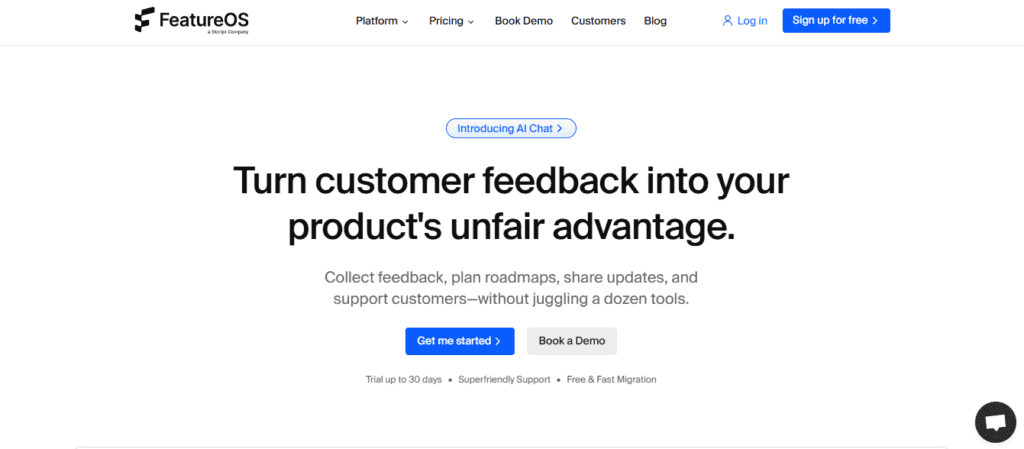
Featurebase is a product release tool designed to help product companies gather feedback more easily, lighten the load on support teams, and keep users in the loop about new updates. Some of the things I really like about this tool are its public feedback boards, the ability to vote on ideas, interactive roadmaps, detailed changelogs, and handy in-app widgets. All of these make it super easy to involve users and keep them engaged at every stage of the feedback process.
What I Like
It’s a single hub where we can collect, sort, and prioritize all our user feedback. What’s really cool is that users can vote for the features they’re most excited about. The interface is simple and intuitive, and it connects seamlessly with a bunch of other tools we already use.
What I Don’t Like
On the downside, customization isn’t as flexible as some other platforms, and it currently supports only English. Getting everything set up can be a bit tricky for those new to the platform, and some users wish features were updated more often.
The Price
Featurebase is more affordable than many other similar tools. They have two main pricing plans to choose from. The first gives unlimited end users and posts and comes with basic integrations. The second plan includes everything they have to offer, such as unlimited boards, advanced integrations, single sign-on, and user segmentation.
My thoughts on GetBeamer alternatives
GetBeamer is a great tool for user engagement and communication, but there are many others that are good at this too. Take LaunchNotes for example – with their targeted updates and excellent integration into Jira, it makes our real-time communication from developers to end users seamless.
LaunchNotes takes the busywork out of product updates. Paste in your notes or tickets and get a structured announcement draft instantly. It’s designed for teams that want to save time, segment updates, and keep communication consistent across every channel.
Supahub is perfect for companies on a budget, and has a simple user interface. If you are more interested in using a visual roadmap with your customers, then Frill is the best choice. If you are looking for a platform that does a good job analyzing your feedback, then you may want to consider Canny. And for those just looking for something less fancy, then you may want to check out Featurebase.
Of course, there are plenty of other platforms out there, but these are the ones I’ve personally worked with. No matter which tool you end up choosing, the most important thing is keeping your customers in the loop about new features and improvements. If users don’t know what’s new, they might miss out on the value you’re providing and that can lead to confusion, frustration, or even losing them as customers.
So, make clear communication a priority and help your users get the most out of your product!


